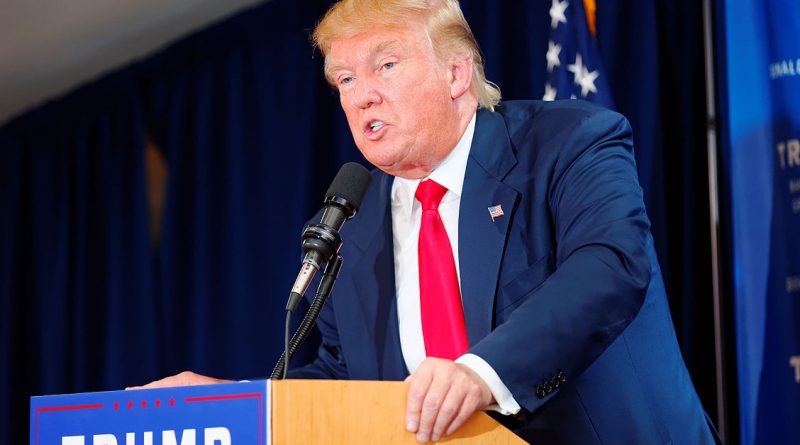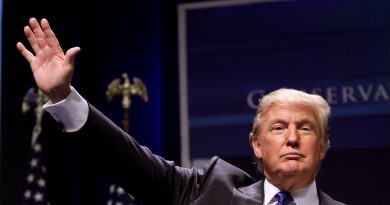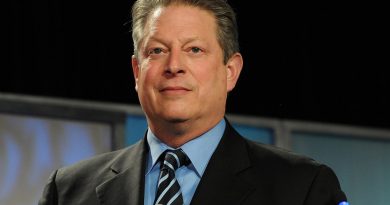The New American Military Posture in the Age of Donald Trump
“At some point, we cannot be the policeman of the world”, asserted Donald Trump during the presidential campaign that ‘crowned’ him President-elect of the USA. Nonetheless, this statement clashes with the US’s vital interests in the world and its military involvement in various theaters, and can be seen as a simplification of the future American foreign and military policy used for the presidential race. On the one hand, it is quite certain that the Trump administration will reshape the American military posture; on the other hand, it is difficult to foresee how.
The first important element that seems to be the basis for the military policy of the next US President is the Index of the U.S. Military Strenght put together by the Heritage Foundation, an influential conservative think-tank. This assessment considers the state of US military and its capabilities to react to a military crisis. The conclusions of the Index are that the US military is in precarious conditions, as “at present, the U.S. military is two-thirds the size it needs to be and, of that two-thirds, only one-third is at acceptable levels of readiness”. In other words, the US Army, at the moment, is unable to prevail if engaged in two major regional crises, as stated by the same think-tank in 2013.
Peace through strength
On these grounds, Trump offered his plan on military policy in a speech in Philadelphia on 7th of September 2016, during the presidential campaign. The keywords that Trump proposed in this speech were “Peace through strength”: a clear admission of the revival of a military policy based on the deterrent effect as consequence of military strengthening. In order to do so, Trump proposed features taken directly from the assessments studied by the Heritage foundation, such us increasing the active Army from 490.000 to 540.000 personnel, increasing the Marine Corps from 23 to 36 Battalions, and raising by several units the Navy and the Air Forces.
Referring to the means needed to rebuild the US military, Trump moved a step forward regarding the reshape of American military policy and grand strategy. Apart from the removal of the defense sequester, the President-elect asserted that he will ask the US’s allies to raise their military expenditures. As stated in a previous post, here at Changing World, Trump’s attitude towards USA allies, especially NATO allies, has raised concern about American military involvement in Europe; on the other hand, it confirms the shift of the American grand strategy from West to East, i.e., to China.
The last element related to the reshaping of American military posture is a controversial tweet posted by the President-elect on 22nd December 2016, in which Trump stated that USA should strengthen its nuclear capabilities.
The United States must greatly strengthen and expand its nuclear capability until such time as the world comes to its senses regarding nukes
— Donald J. Trump (@realDonaldTrump) December 22, 2016
This tweet has been quite controversial, as in past interviews Trump asserted that nuclear weapons and their proliferation are the biggest problem in the world; nonetheless, in other press releases, he seemed to change his point of view, suggesting that Japan and South Korea should be allowed to develop nuclear weapons to respond to the Chinese and North Korean nuclear threat, and stating that he want to strengthen American Armed Forces in order not to resort to nuclear weapons.
America first
From these elements, it seems that the future of the north-american military stands in a complicated clash of perspectives that the actual President-elect will have to solve. Nonetheless, some elements are quite clear, at least in terms of intentions.
First, Trump’s motto “America first” is also relevant in the military sphere as much as in his political general view: Trump will consider any eventual military involvement from the point of view of the US vital interests more than before.
Second, the latter consideration justifies the shift from a “western grand strategy” to an eastern one: the most dangerous American competitor is now China, and since this power can undermine American vital interests, US military effort must be redirected to the eastern theater. Moreover, Trump’s attitude towards Putin during the recent diplomatic crisis suggests that a new course in the relation between the USA and Russia is foreseeable.
Third, in order to compete with China, it is necessary to strengthen the US armed forces, and this will be done through asking for more financial involvement of allied countries – especially NATO countries – and raising funds for the armed forces.
Finally, Trump’s perspective on nuclear weapons has been much controversial as confused because of contradictory assessments by the President-elect.
Donald Trump. Photo by Michael Vadon / CC BY-SA 4.0
![]() This work is licensed under a Creative Commons Attribution-NonCommercial-ShareAlike 4.0 International License.
This work is licensed under a Creative Commons Attribution-NonCommercial-ShareAlike 4.0 International License.




